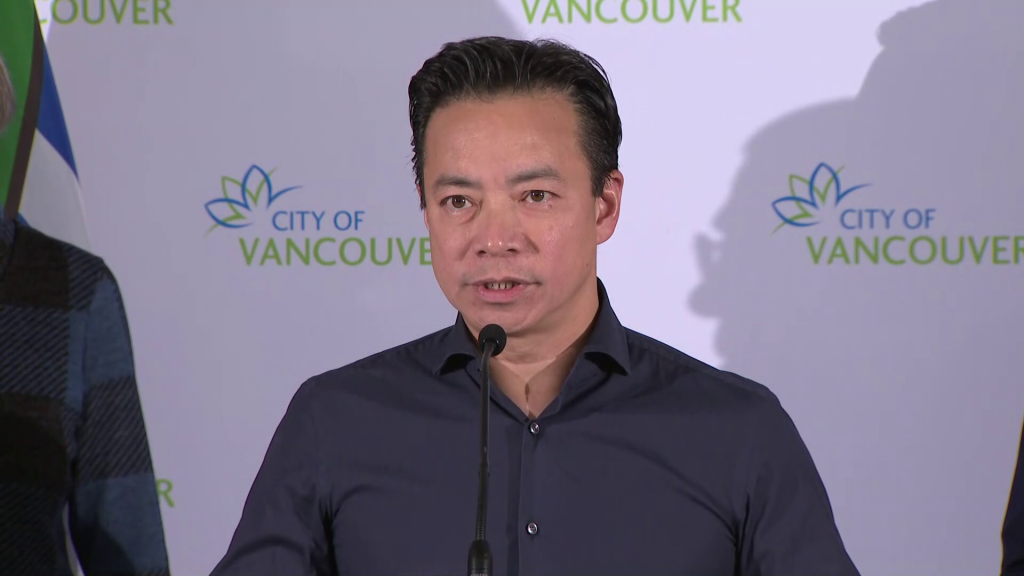Despite pushback, Stanley Park tree removal necessary: Vancouver Park Board

Posted March 19, 2024 3:06 pm.
Last Updated March 20, 2024 7:54 pm.
Calls are mounting for the Vancouver Park Board to stop clearing trees in Stanley Park, with a petition gaining momentum online.
Those behind the change.org petition claim the removal of trees is “causing irreversible damage to our environment.”
“Stanley Park has always been a sanctuary for city dwellers, a retreat from the hustle and bustle of urban life, an attraction for tourists because of its natural beauty, and a proud model of a semi-wild ecosystem within a metropolis,” the petition reads.
“For hundreds of years, the lush forest trails have provided Vancouverites and visitors a serene escape, but now they are marred by the sights and sounds of the highway as trees are being felled hour by hour.”
Officials have said the work to remove roughly 25 per cent of the trees in the park is necessary, noting they have been destroyed by a hemlock looper moth infestation.

However, those behind the petition question this “narrative,” saying the city has “failed to provide scientific evidence to substantiate its claim; further, many living seemingly-healthy trees are being cut down.”
Jillian Maguire, a local teacher who signed the petition, says she wants the Vancouver Park Board to be transparent about its plans.
“(I) want them to stop, full-on stop! Until these plans have been made public and experts have been brought in,” she said.
The petition has reached over 16,000 signatures as of Wednesday morning. It also claims that the city did not put forward scientific evidence to prove removal of trees is necessary.
An ecology expert, Gail Wallin, executive director of the Invasive Species Council of British Columbia, says it’s not a simple job for those managing Stanley Park.
“It’s never an easy situation because there’s also a balance, and our natural ecosystems will change and evolve… But in this case, you’re dealing with an area that’s also got a lot of public traffic,” she said.
Despite the criticisms, Vancouver Park Board Chair Brennan Bastyovanszky is doubling down that the felling has to be completed.
He says the trees killed by the moths were never supposed to be in Stanley Park as long as they have been.
“I’m heartbroken about the state of the forest. But it’s hemlock. Hemlock was heavily planted and intentionally planted. The hemlocks were never meant to get that big or to dominate the forest — it has a much shorter lifespan and they’re more subjected to pests,” he explained.
Bastyovanszky says aside from safety concerns, the dead trees also pose an elevated fire risk. Given the province is expecting a drier-than-usual spring and summer due to low snowpack, the removal is needed quickly, he adds.
“We’re going into a really hot, dry summer, and our water table is really low. So we have to get out as much of the dangerous, dry, dead wood — the fire hazard material — before summer comes. That’s why they’re moving quickly to remove the dead timber,” he told CityNews.
More trees to be planted in the fall: Vancouver Park Board chair
The Vancouver Park Board chair says there are plans to plant new trees in the fall, to readd some greenery to the forest.
The trees that are slated to replace the hemlocks that are being cut down are red cedars, Douglas firs, and other species that are “more native to the area and more resilient to pests and climate change.”
Long term, Bastyovanszky says this is a good thing.
“We’ve got Urban Forestry doing this. It’s not a problem unique to Vancouver. We’re the only city in Canada that has an actual giant, thousand-acre forest. So we do have unique challenges. But the way it’s being managed, with a professional urban forestry team, they’re looking at it through that technical lens. The hemlock’s dead, we can’t get them to grow back, so they’re just cutting them all down and replacing them with a better, more resilient tree,” he explained.
“The light will get through, the under growth will return. In a year, it’ll look very different.”
Vancouver Park Board commissioners are planning to do a walkthrough on Thursday to survey some of the areas.
According to experts, the native hemlock looper moths go through cycles that are 11 to 20 years in length. Stanley Park recently experienced an outbreak of these insects.
“The outbreak will last about three years,” John Richardson, a wildlife biologist with the University of British Columbia, said in December.
“When it gets to the point where nearly 80 per cent of the leaves have been eaten, they are unlikely to survive. They just can’t put enough energy and nutrients back into the soil to get them through the winter.”
-With files from Michael Williams and Kier Junos








